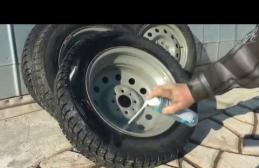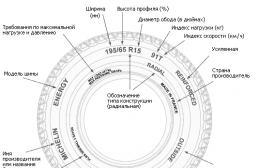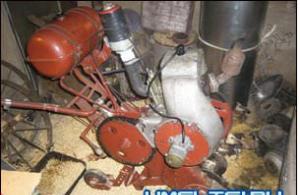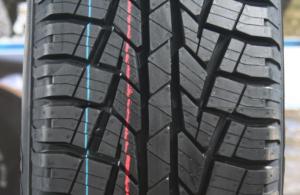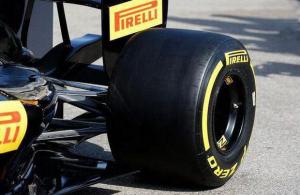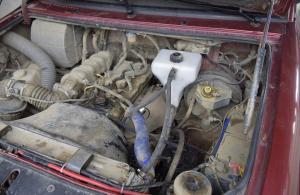31.07.2018
Corolla is one of the models of the Japanese automotive giant, known all over the world. Along with VW Golf, it is loved for its reliability, unpretentiousness and comfort, available for a very humane price tag. The Toyota Corolla engine can have a volume of 1.3 to 1.8 liters, while three options will be available for purchase at the moment. Each of the units offers unique characteristics, be it acceleration dynamics, fuel consumption, reliability or maintenance costs. We will also consider the still widespread 1.4-liter engine, which was installed on cars in the bodies of 150 and 120 and is no longer produced.
Toyota Corolla E150
1.3 1NR-FE (Corolla E180)
It is not surprising that such a unit is installed in the most popular Japanese car. The 1NR-FE engine itself can be considered the most massive internal combustion engine of the entire NR-series. Most modern technologies such as Dual VVT-i, Stop-Start systems and the return to the old standard of intake and exhaust manifold placement are present here. The working volume of the motor is 1329 cubic centimeters, resulting in an output of 95-102 horsepower.
The operational characteristics are as follows: fuel consumption in the combined cycle can reach 6 liters, and gasoline must be AI-95. For a number of European countries, the engine is being modernized to comply with the Euro 5 standard, due to which the power is reduced to 98 forces, and the octane number of the required fuel increases to 98. In Europe, this option is called Premium. Most Russian cars comply with the Euro 4 standard, due to which the power slightly exceeds 100 forces. Its dynamics are appropriate: up to 100 km / h Corolla E180 with such a power unit will accelerate in 12.6 seconds.

1.33 liter engine, the most economical unit in the Corolla line
Since the engine is quite popular, there is information on the network about problems that often arise with this unit. First of all, this is increased oil consumption and difficult cold start. For countries with harsh climates, Toyota has provided a system for heating the coolant with exhaust gases. The system is deactivated as soon as the temperature of the 1.3-liter unit reaches operating values.
Of the predicted breakdowns, it is also worth noting the knock of VVT-i drives during a cold start, carbon deposits in the intake manifold, which appears due to the operation of EGR, and a water pump leak. As a rule, major problems begin to manifest themselves only by the end of the second hundred thousand run. If you properly care for the engine and change all fluids in a timely manner, then it will easily cover 300-400 thousand kilometers without major repairs, which, by the way, is impossible due to the thin cylinder walls. The engine can be easily found on a contractual basis, as it has been installed on many car models for the Japanese market.
What Toyota were equipped with 1NR-FE:
- Auris;
- Axio;
- Passo;
- Porte;
- Probox;
- Ractis;
- Vitz;
- Yaris.
1.6 1ZR-FE (E180)
The ZR-series includes several motors, one of which is the 1ZR-FE. Like the 1NR-FE, the 1ZR-FE is equipped with a Dual VVT-i valve timing system and a Stop - Start system, as these options are standard on most Toyota ICEs. The working volume of the presented model is 1598 cubic centimeters, and the output varies from 122 horsepower to 132. Power also depends on the environmental standard, as in the analogue described above.
During the operation of the 1ZR-FE under the hood of the Corolla, only AI-95 gasoline must be poured into the tank. Its combined consumption is usually 7.2 liters with moderate driving style. The main power is achieved at high revs, of the order of four to six thousand, thanks to which overtaking on the highway can be done without fear. The acceleration of the body with such an internal combustion engine to 100 km / h is difficult to call racing: 10.5 seconds. This indicator is sufficient for comfortable city driving, there is nothing to do on the track for a small car.
All the problems of the unit have long been known, since it was previously installed in the bodies of the Corolla E150 and E170. The most common complaint is oil consumption. The location of the oil filter is not the most convenient here, which makes it more difficult to control its condition. After several thousand kilometers of run, the filter begins to let oil through, since its pressure in the system is high. This problem is solved by a banal replacement of the filter along with the engine oil.

1ZR-FE is the most common power unit on modern Corolla models
Another problem is the stretching timing belt, which happens closer to 100-150 thousand kilometers. In addition, engine noise becomes more noticeable with increasing mileage. It is treated with a simple THAT. The last problem that the Toyota Corolla 1.6 engine throws up to drivers is floating revs. This is due to too much carbon deposits on the intake and throttle. As with the 1NR-FE, the problem is a consequence of the EGR system. With proper care, such a power plant can live up to 400,000 km.
This power unit is not widely used among Japanese cars. Nevertheless, several models with a similar engine were actively sold in different markets, which means that spare parts from:
- Auris;
- Corolla of past generations;
- Altis for South Asian markets.
1.8 2ZR-FE (E180)
It is this power unit that is now the largest of all that are installed in the modern generation of Toyota Corolla. It was introduced in 2007, and is also equipped with a Dual VVT-i, like the two previous motors, however, it has a larger displacement: 1797 cubic centimeters. It replaced the outdated 1ZZ-FE, which many did not like due to a number of problems, the most significant of which was the MPFI multipoint fuel injection system.
The torque output of the Corolla 1.8 engine is the most optimal for a city car, from time to time leaving the limits of its native settlement. 140 horsepower is enough for comfortable overtaking and acceleration from 0-100 in a little over 10 seconds. At the same time, fuel consumption is not much higher than that of its younger brother: up to 9 liters in the combined cycle. In “greenhouse conditions”, when the street is calm, the road is perfectly flat and the 90 km / h limit is in effect, the consumption will be 6 liters of 95 or, for some markets, 92 of gasoline.
Among the problems, you cannot find anything different from the 1ZR, because they are the same, with the exception of the displacement of the cylinders and some parts that depend on it. The resource is also on a par with the 1ZR-FE: this engine can travel more than 400,000 kilometers if it is properly looked after and the oil is changed in a timely manner. Overhaul, as in the case of the younger brother, is not expected due to the thin cylinder walls.
The unit with a volume of 1.8 liters can be very often found on cars of a higher class. This means that the search for contract parts for him will not be difficult. The 2ZR-FE engine was installed in Toyota:
- Allion;
- Premio;
- Fielder;
- Altis;
- Axio;
- Auris;
- Yaris;
- Matrix;
Also, this unit was installed on such well-known (mostly not in Russia) cars like Pontiac Vibe and Scion xD.
The 11th generation Toyota Corolla sedan (E160 body) in Russia is equipped with three four-cylinder "aspirated" engines: 1.33 (99 HP, 128 Nm), 1.6 (122 HP, 157 HP) and 1.8 (140 hp, 173 Nm). The first two power units migrated to the updated car from the previous generation car (body 150), losing 2 hp each. power (previously the output was 101 and 124 hp, respectively). The "older" 1.8-liter engine is a newcomer, as it was not presented on the Russian market before the generational change.
The trio of power plants is complemented by two transmission options: a 6-speed manual transmission and a 7-range MultiDrive S variator with a torque converter. The manual transmission is installed in a pair with 1.33 and 1.6 engines, and the variator is combined with 1.6 and 1.8 liter engines.
The sedan is available in front-wheel drive design. The suspension is built around MacPherson struts and a rear semi-beam. In the course of the generational change, the chassis configuration was revised, in particular, the damping settings of the struts and the torsion beam mounting scheme were changed.
Fuel consumption of Toyota Corolla with an initial engine of 1.33 liters and manual transmission, according to passport data, does not exceed 5.6 liters per 100 km with a combined driving cycle. A sedan with a 1.6-liter engine consumes an average of 6.6 (with manual transmission) or 6.3 (with a variator) liters. Toyota Corolla 1.8 consumes no more than 6.4 liters per 100 km.
Specifications Toyota Corolla table:
| Parameter | Toyota Corolla 1.33 99 HP | Toyota Corolla 1.6 122 HP | Toyota Corolla 1.8 140 HP | |
|---|---|---|---|---|
| Engine | ||||
| engine's type | petrol | |||
| Injection type | distributed | |||
| Pressurization | No | |||
| Number of cylinders | 4 | |||
| Arrangement of cylinders | inline | |||
| Number of valves per cylinder | 4 | |||
| Volume, cubic meters cm. | 1329 | 1598 | 1798 | |
| Power, h.p. (at rpm) | 99 (6000) | 122 (6000) | 140 (6400) | |
| 128 (3800) | 157 (5200) | 173 (4000) | ||
| Transmission | ||||
| Drive unit | front | |||
| Transmission | 6MKPP | 6MKPP | variable speed drive | variable speed drive |
| Suspension | ||||
| Front suspension type | independent MacPherson type | |||
| Rear suspension type | semi-dependent | |||
| Brake system | ||||
| Front brakes | ventilated disc | |||
| Rear brakes | disk | |||
| Steering | ||||
| Amplifier type | electric | |||
| Tires and rims | ||||
| Tire size | 195/65 R15 | 205/55 R16 | ||
| Disk size | 6.0Jx15 | 6.5Jx16 | ||
| Fuel | ||||
| Fuel type | AI-95 | |||
| Environmental class | Euro 5 | |||
| Tank volume, l | 55 | |||
| Fuel consumption | ||||
| Urban cycle, l / 100 km | 7.2 | 8.7 | 8.2 | 8.3 |
| Country cycle, l / 100 km | 4.7 | 5.4 | 5.3 | 5.3 |
| Combined cycle, l / 100 km | 5.6 | 6.6 | 6.3 | 6.4 |
| dimensions | ||||
| Number of seats | 5 | |||
| Number of doors | 4 | |||
| Length, mm | 4620 | |||
| Width, mm | 1775 | |||
| Height, mm | 1465 | |||
| Wheelbase, mm | 2700 | |||
| Front wheel track, mm | 1535 | 1525 | ||
| Rear wheel track, mm | 1535 | 1520 | ||
| Front overhang, mm | 940 | |||
| Rear overhang, mm | 980 | |||
| Interior dimensions LxWxH, mm | 1930х1485х1190 | |||
| Trunk volume, l | 452 | |||
| Ground clearance (clearance), mm | 150 | |||
| Weight | ||||
| Curb, kg | 1225-1355 | 1260-1375 | 1275-1380 | |
| Full, kg | 1735 | 1775 | 1785 | |
| The mass of the towed trailer (equipped with brakes), kg | 1000 | 1300 | ||
| Mass of the towed trailer (not equipped with brakes), kg | 450 | |||
| Dynamic characteristics | ||||
| Maximum speed, km / h | 180 | 195 | 185 | 195 |
| Acceleration time to 100 km / h, s | 12.6 | 10.5 | 11.1 | 10.2 |
Toyota Corolla engines
1.33 1NR-FE Dual VVT-i 99 HP
The basic subcompact motor of the NR series dates back to 2008. The engine is equipped with an aluminum cylinder block, a distributed injection system, phase shifters on both shafts (Dual VVT-i), an electronically controlled throttle valve (ETCS), a crankshaft with 4 counterweights (the axis is offset by 8 mm relative to the cylinder axis), hydraulic lifters for the correction of clearances in the valve mechanism, timing chain drive, EGR system (exhaust gas recirculation) with a valve drive from a stepper motor.
1.6 1ZR-FE Dual VVT-i 122 HP
The engine was first introduced in 2007. Design features - aluminum block, 16-valve timing (DOHC), variable valve timing on both shafts (Dual VVT-i), hydraulic lifters, multipoint injection. The Valvematic system (valve lift control) is not provided for engines installed on Russian versions of the sedan.
1.8 2ZR-FE Dual VVT-i 140 HP
The atmospheric "four" 2ZR-FE is structurally similar to the 1ZR-FE with all the ensuing pros and cons. The main difference from the "younger" brother is a different crankshaft and piston with a stroke increased to 88.33 mm. In terms of traction, the 1.8-liter unit is only marginally superior to its engine partner.
| Parameter | 1.33 99 HP | 1.6 122 h.p. | 1.8 140 h.p. |
|---|---|---|---|
| Engine code | 1NR-FE | 1ZR-FE | 2ZR-FE |
| engine's type | gasoline without turbocharging | ||
| Supply system | distributed injection, dual electronic valve timing system Dual VVT-i, two camshafts (DOHC), chain timing | ||
| Number of cylinders | 4 | ||
| Arrangement of cylinders | inline | ||
| Number of valves | 16 | ||
| Cylinder diameter, mm | 72.5 | 80.5 | 80.5 |
| Piston stroke, mm | 80.5 | 78.5 | 88.33 |
| Compression ratio | 11.5:1 | 10.2:1 | 10.0:1 |
| Working volume, cubic meters cm. | 1329 | 1598 | 1798 |
| Power, h.p. (at rpm) | 99 (6000) | 122 (6000) | 140 (6400) |
| Torque, N * m (at rpm) | 128 (3800) | 157 (5200) | 173 (4000) |
Toyota Corolla gearboxes
The range of transmissions available for Toyota Corolla is represented by a 6-speed manual transmission and a Multidrive S variator, which replaced the 4-band "automatic". The variator provides three operating modes: automatic (lever position D), sport (activated by a button) and shiftmatic (lever position M). The latter mode allows you to manually change gears using the selector on the inter-passenger tunnel or paddle shifters.
| Parameter | 6-speed manual transmission | CVT Multidrive S | ||
|---|---|---|---|---|
| 1.33 99 HP | 1.6 122 h.p. | |||
| Model | EC61 | EC60 | K311 | |
| Gear ratio | 1st gear | 3.538 | 3.538 | — |
| 2nd gear | 1.913 | 1.913 | — | |
| 3rd gear | 1.392 | 1.310 | — | |
| 4th gear | 1.029 | 1.971 | — | |
| 5th gear | 0.875 | 1.818 | — | |
| 6th gear | 0.743 | 1.700 | — | |
| Forward gear | — | — | 2.386-0.411 | |
| Reverse gear | 3.333 | 2.505-1.680 | ||
Toyota Corolla 1.6 engine liter is one of the most popular and successful engines on the Toyota Corolla. The motor model according to the manufacturer's internal classification is 1ZR-FE. This is a gasoline aspirated, 4-cylinder, 16-valve engine with a timing chain drive and an aluminum block of cylinders. Toyota designers have tried to make sure that the consumer does not look under the hood at all. The service life and reliability of the power unit are very decent. The main thing here is to change the oil on time and pour high-quality fuel. 
Engine device Toyota Corolla 1.6
The Toyota Corolla 1.6 engine incorporates all the best developments of the previous generations of the Japanese manufacturer's engines. The engine has advanced variable valve timing systems Dual VVT-i, valve lift valve Valvematic, in addition, the intake tract has a special design that allows you to change the air flow rate. All of these technologies have made the motor the most efficient powertrain possible.
Toyota Corolla 1.6 engine cylinder head

The cylinder head is a pastel for two camshafts with "wells" in the center for the spark plugs. The valves are arranged in a V-shape. A feature of this engine is the presence of hydraulic lifters. That is, there is no need to adjust the valve clearance once again. The only problem is associated with the use of low-quality oil, in this case the channels can be clogged and the hydraulic lifters will no longer perform their function. In this case, a characteristic unpleasant sound will come from under the valve cover.
Timing drive for Toyota Corolla 1.6 engine
The designers and engineers of Toyota decided to make the chain drive of the engine as simple as possible, without all kinds of intermediate shafts, additional tensioners, dampers. In the timing drive, in addition to the crankshaft sprockets and camshafts, only the tensioner shoe, the tensioner itself and the damper are involved. The timing diagram is just below.

For the correct alignment of all timing marks, there are yellow-orange colored links on the chain itself. When installing, it is enough to align the marks on the camshaft and crankshaft sprockets with the painted chain plates.
Technical characteristics of the engine Toyota Corolla 1.6
- Working volume - 1598 cm3
- Number of cylinders - 4
- Number of valves - 16
- Cylinder diameter - 80.5 mm
- Piston stroke - 78.5 mm
- Timing drive - chain
- Power hp (kW) - 122 (90) at 6000 rpm. in min.
- Torque - 157 Nm at 5200 rpm. in min.
- Maximum speed - 195 km / h
- Acceleration to the first hundred - 10.5 seconds
- Fuel type - AI-95 gasoline
- Fuel consumption in the city - 8.7 liters
- Combined fuel consumption - 6.6 liters
- Fuel consumption on the highway - 5.4 liters
In addition to timely replacement of high-quality oil, pay close attention to what you refuel the car with. If you do not pour anything into the engine, then the engine will delight you for many years. In practice, the motor resource is up to 400 thousand kilometers. True, repair dimensions for the piston group are not provided. Perhaps one more weak point is the sudden changes in temperature. If you overheat the engine, then the cylinder head or even the block may be deformed, and this is a significant financial loss. The 1ZR-FE engine was installed on almost all 1.6 liter Corollas (and other Toyota models) produced from 2006-2007.
24.02.2017
Toyota Corolla is a super popular auto golf class, the fame of the model reached mass significance, that Corolla got into the Guinness Book of Records as the best-selling model in the world. Toyota Corolla in the Toyota lineup takes a place between Avensis and Camry, and of course stands above its younger brother - Yaris. Competing with Mitsubishi Lancer, Ford Focus, Citroën C4, Opel Astra, Honda Civic, Nissan Almera / Pulsar / Sentra, Mazda 3, Skoda Octavia, Volkswagen Golf, Kia Ceed / Cerato, Hyundai Elantra, Subaru Impreza and C-class cars.

During the production period, many different options were produced on the Corolla platform, for example, Toyota Levin, Trueno, Corolla II, Rumion, Verso, Matrix, Estima.
Of course, taking into account the popularity of the platform of cars and engines, a huge number was created from the most non-driving to 4A-GE TRD, where the company's craftsmen removed 240 hp from 1.6 liters. Which Toyota Corolla engine is better and how do they differ from each other, how to choose? The site will undoubtedly help in these issues, we will consider the technical properties of the engines that have been installed on the Toyota Corolla platform since 2012.

Engine 3ZR-FE / FAE / FBE
This engine features an increased displacement from the ZR series. It appeared in 2007 and replaced 1AZ. It differs from its counterparts 1ZR and 2ZR by a crankshaft with an increased piston stroke up to 97.6 mm. The rest of the nuances are the same engine in the ZR series. 3ZR-FE - twin VVTi engine, 10 compression ratio, 143 hp. 3ZR-FAE - analogue of 3ZR-FE with Valvematic system. Power increased to 155 hp. 3ZR-FBE - analogue of 3ZR-FE, runs on biofuels from food (for example, corn). The engine power reaches 151 hp. Found in the Brazilian Toyota Corolla market.
3ZR Problems and Their Causes The minuses and problems of the 3ZR engine are exactly the same as in the entire class of these engines in the ZR series. ENGINE RATING: 5 (maximum for good reliability and high power).
2ZR-FE / FAE / FXE engine
The 2ZR engine came out in 2007 as a replacement for the popularly disliked 1ZZ engine, and occupies an intermediate position in the Toyota ZR lineup. From the first, the 2ZR differs in an increased crankshaft stroke from 78.5 mm to 88.3 mm, in the 3ZR, respectively, a crankshaft with a large stroke. 2ZR-FE - base engine, with Dual-VVTi system, compression ratio 10, power from 128 to 134 hp. 2ZR-FAE - analogue of 2ZR-FE, using Valvematic valve lift control system. Compression ratio increased to 10.5, engine power, depending on the model, from 143 to 150 hp. 2ZR-FXE - analogue of 2ZR-FE for hybrid cars, works according to the Atkinson cycle. The compression ratio is increased to 13, the power is 98 hp. Found on cars such as Toyota Prius, Lexus CT 200h and Toyota Auris. 3ZR problems and their causes The minuses and problems of the 3ZR engine are exactly the same as in the entire class of these engines of the ZR series, we will consider later in the article. ENGINE RATING: 4
Engine 1ZR-FE / FAE
The motor was introduced in 2007 as a successor and modified motor from the unsuccessful ZZ series. At its core, this is a very progressive engine and the best in terms of reliability, due to the fact that the load on the liner is reduced, and the cylinder axis does not intersect with the crankshaft axis, Dual VVT-i was also used. A system for changing the valve timing on the intake and exhaust shafts was organized, in parallel, the engineers created the Valvematic system, which allows you to change the valve lift in the range from 0.9 to 10.9 mm. Hydraulic lifters appeared and now there is no need to adjust the valves. According to Toyota's new tradition, the ZR engine can be used only once, since it is in an aluminum block, according to the new tradition, without overhaul dimensions, with all the ensuing consequences. 1ZR-FE - main engine, equipped with twin VVTi, compression ratio 10.2, power 124 hp The engine went to Toyota Corolla and Toyota Auris. 1ZR-FAE - analogue of 1ZR-FE, but together with Dual-VVTi, Valvematic is used, compression ratio increased to 10.7, engine power 132 hp. ENGINE RATING: 4
The main malfunctions of the ZR series motors:
1. Large oil consumption. Mainly found in early ZR models. The solution is easy enough - pour oil with a higher viscosity W30, instead of 0W-20, 5W-20. If the mileage is approaching 200 thousand km, then you need to measure the compression.
2. Engine knocking, noise often appears at medium speed. Most likely these are timing chain tensioners. Also, whistling and noise can be heard from the generator drive belt, which simply needs to be replaced.
3. Floating idle, and other troubles are created by the throttle position sensor and the accumulated soot on the throttle itself. In this case, you just need to clean the damper and test the sensors.
4. Very often the pump leaks on ZR motors, it makes a noise and says - it's time to unscrew and throw me away. This problem occurs after 50-70 thousand km. Together with the pump, the thermostat often stops working and the motor does not warm up to the desired temperature. Temperature problems can cause VVTi valves to wedge, the car will slow down its response to the accelerator pedal and lose power.
It is very important that these problems are quite rare, and it all depends on the mode in which the car was operated, on what oil, how often the oil was changed, and of course on the quality of the fuel. The normal resource of the motor is up to 250 thousand km and, with timely maintenance, does not cause significant problems.
Toyota ZR engine tuning:
Everyone can buy a turbo kit for ZR, for normal money, based on the 28th Garrett, with a complete set: turbine, intercooler, manifold, all pipes, blowoffs, 440 / 500cc nozzles, cold air intake, all filters, walbro pump 255. Of course, this kit will have to be supplied with additional exhaust on a 2.5 ″ pipe and set up the engine on the computer through a special firmware. Through this Kit it is possible to get 250-300 hp. However, for trouble-free operation of the motor, you need to change the ShPG to forging for a compression ratio of 8.5-9, or adjust the inflation in the piston aluminum block to no more than 0.5 bar. When implementing this tuning, the engine resource is significantly reduced.
| Production | 3ZR-FE / FAE / FBE 2.0 l. | 2ZR-FE / FAE / FXE 1.8 L | 1ZR-FE / FAE 1.6 l. |
| Toyota Motor Manufacturing West Virginia | Toyota Motor Manufacturing West Virginia | ||
| Shimoyama plant | Shimoyama plant | Shimoyama plant | |
| Engine brand | Toyota 3ZR | Toyota 2ZR | Toyota 1ZR |
| Years of release | 2007-present | 2007-present | 2007-present |
| Cylinder block material | aluminum | aluminum | aluminum |
| Supply system | injector | injector | injector |
| A type | inline | inline | inline |
| Number of cylinders | 4 | 4 | 4 |
| Valves per cylinder | 4 | 4 | 4 |
| Piston stroke, mm | 97,6 | 88,3 | 78,5 |
| Cylinder diameter, mm | 80,5 | 80,5 | 80,5 |
| Compression ratio | 10 | 10 | 10,2 |
| Engine displacement, cubic cm | 1986 | 1797 | 1598 |
| Engine power, hp / rpm | 153/6000 | 140/6000 | 126/6000 |
| 158/6200 | 147/6400 | 134/6400 | |
| Torque, Nm / rpm | 194/3900 | 171/3900 | 160/4400 |
| 203/4000 | 207/4000 | 157/5200 | |
| 195/4400 | 176/4400 | ||
| Fuel | 95 | 95 | 95 |
| Environmental standards | Euro 5 | Euro 5 | Euro 5 |
| Engine weight, kg | - | 97 (dry) | - |
| Fuel consumption, l / 100 km (for RAV4 XA40) | |||
| - town | 10 | 8,3 | 8,9 |
| - track | 6,4 | 5,3 | 5,8 |
| - mixed. | 8 | 6,4 | 6,9 |
| Oil consumption, gr. / 1000 km | up to 1000 | up to 1000 | up to 1000 |
| Engine oil | 0W-20 | 0W-20 | 0W-20 |
| 5W-20 | 5W-20 | 5W-20 | |
| 5W-30 | 5W-30 | 5W-30 | |
| 10W-30 | 10W-30 | 10W-30 | |
| How much oil is in the engine | 4,2 | 4,2 | 4,7 |
| Oil change is being carried out, km | 10000 | 10000 | 10000 |
| (better than 5000) | (better than 5000) | (better than 5000) | |
| Engine operating temperature, deg. | - | - | - |
| Engine resource, thousand km | |||
| - according to the plant | n.d. | n.d. | n.d. |
| - on practice | ~250 | ~250 | 250-300 |
| Tuning | |||
| - potential | 250+ | 250+ | 200+ |
| - without loss of resource | n.d. | n.d. | n.d. |
| The engine was installed | Toyota Allion | Toyota Corolla Rumion | Toyota Auris |
| Toyota noah | Toyota iSt | Toyota Verso | |
| Toyota Voxy | Toyota Wish | Lotus elise | |
| Toyota Wish | Toyota Prius | Toyota corolla | |
| Toyota Avensis | Toyota Auris | Toyota Avensis | |
| Toyota corolla | Toyota Verso | ||
| Toyota Premio | Lexus CT200h | ||
| Toyota RAV4 | Scion xD | ||
| Pontiac vibe | |||
| Lotus elise | |||
| Toyota corolla | |||
| Toyota Avensis | |||
| Toyota Matrix | |||
| Toyota Premio | |||
| Toyota Auris |
Select it and press Ctrl + Enter
New spy photos of the 8th generation Volkswagen Golf have been circulated on the Internet.

Photo spies managed to capture a novelty with a plug-in hybrid powertrain on road tests. The car has practically lost the camouflage film, only the stickers on the outline around the headlights and on the back of the model have been preserved. According to assumptions, the body of the presented concept is extremely close to the production model.

At the same time, the technical equipment of the novelty is currently kept secret. It is assumed that the new car will acquire the same hybrid powertrain as the previous model. We are talking about a standard 1.4- or 1.5-liter petrol power plant with 150 hp, which will be combined with a 50-horsepower electric motor.

It is expected that the updated hatchback will receive an improved 13 kWh battery, which will make it possible to cover a distance of 70 km on a single electric traction.
The rechargeable Volkswagen Golf GTE will be based on the modern MQB platform, which will reduce the weight of the car by 35-70 kg and increase the luggage compartment volume to 400 liters. The new generation Volkswagen Golf will debut in October. And the show of the hybrid variation will take place only next year.
Toyota Corolla engines have been considered reliable and unpretentious since 1993. The Japanese know how to create structures that, with a small volume, have high power, while boasting minimal consumption. These are technically advanced and practical units with a long resource.
Toyota Corolla 1.6 1ZR FE engine
The Toyota Corolla 1.6 1ZR FE engine can be called the most demanded and successful. This engine contains 4 cylinders, 16 valves, a timing chain drive, which practically eliminates problems with it.
The engine resource is quite large.
It will pass the first 200 thousand without any intervention, the main thing is to make sure that the oil consumption is not too high, to change fluids on time (preferably after 10-15 thousand mileage) and to fill in high-quality fuel, since the 1.6 1ZR FE engine is quite sensitive to impurities in gasoline.
How does this motor work?
The engine for the 1.6 1ZR FE is found in the E160 and E150 bodies, it was developed taking into account the previous experience, created using advanced technologies. Gas distribution has a VVTI system, thanks to which the power supply is of the highest quality. In addition, the electronics controls valve lift and air flow into the system, which makes the unit's operation most efficient.
1.6 VVT is equipped with two camshafts at once, the valve arrangement is V-shaped. There are hydraulic lifters, so valve adjustment is not required. It is necessary to monitor the quality of the oil, it is desirable to fill in the original substance. If you do not do this, the hydraulic lifters fail, you can find out about this if a knock appears in the engine.
Drive features
The device of the Toyota Corolla 1.6 1ZR FE engine is as reliable and simple as possible: engineers have removed all unnecessary tensioners and shafts, leaving a strong metal chain. For proper chain operation, only one tensioner and damper are installed.
For ease of adjustment, the desired links are colored orange.
Technical details
ICEs of Toyota Corolla 1ZR FE are distinguished by the following characteristics:
- Engine displacement - 1.6 liters.
- 4 cylinders, power - 122 HP With.
- Acceleration to hundreds is carried out in 10.5 seconds.
The engine is powered by AI 95, the consumption on the highway is 5.5 liters, the mixed cycle is more per liter, in the city - about 9-10 liters. The working resource is 400 thousand km. A special feature is the absence of overhaul dimensions for the cylinders. In addition, the engine suffers greatly from overheating. Such motors were installed in almost all cars produced before 2008.
Motor Toyota Corolla 1.6 3ZZ
Toyota Corolla was equipped with other engines. In cars with the E150 body, you can often find the 3ZZ I engine. It is most often found in cars made in 2002, 2005, but the line was equipped with such engines from 2000 to 2007. This engine is considered an upgraded 1ZZ-FE.
Main characteristics
The motor has an injection power supply system, therefore it can be denoted by the letter I. There are 4 cylinders, the volume is 1.6 liters, the power is 190 liters. With.; urban consumption is the same as in the previous version, on the highway consumption will be about 6 liters, with mixed use - 7.

The body is made of aluminum, which made the power unit lighter and saved it from overheating. Main disadvantages:
- High oil consumption is a common problem. If oil consumption is increased, the problem should be looked for in the oil scraper rings. You need to carefully look at which oil filter is installed. If a non-original oil is used, oil consumption may increase due to poor cleaning.
- The timing chain can stretch over time, so there is a characteristic knock. Less commonly, valves are the cause.
- The liner can become a big problem if the motor is serviced irregularly. The problem of overheating, although significantly reduced, was not completely eliminated.
The resource of this Toyota engine is at least 200 thousand km. Repairable cylinders allow it to be enlarged.
You need to be careful about changing the oil, it is required to do it every 10 thousand km, for which you need to purchase 4.2 liters.
Toyota Corolla 1.6 VVT I engine
The VVT I motor is often found on cars produced for the Russian Federation. They have 4 cylinders, an aluminum body, 16 valves, a fuel injection system and a timing chain. The performance of the unit was improved thanks to the use of VVT-I technology. The valve timing is adjusted almost perfectly, so the engine turned out to be quite dynamic with an economical consumption (below 10 liters).

The cars produced in 2011–2014 received hydraulic lifters, which eliminates the need to adjust the valves. A serious disadvantage of the VVT-I is its poor maintainability, the cylinders are almost impossible to bore. The characteristics of the motor model are similar to the 1ZR FE.
Conclusion
Engines on Toyota Corolla from 1993 and later releases (E80, 150, 160, etc. with volumes of 1.5, 1.6 and others) cause little criticism from car owners. You can more fully familiarize yourself with these units using the video on the Internet.

